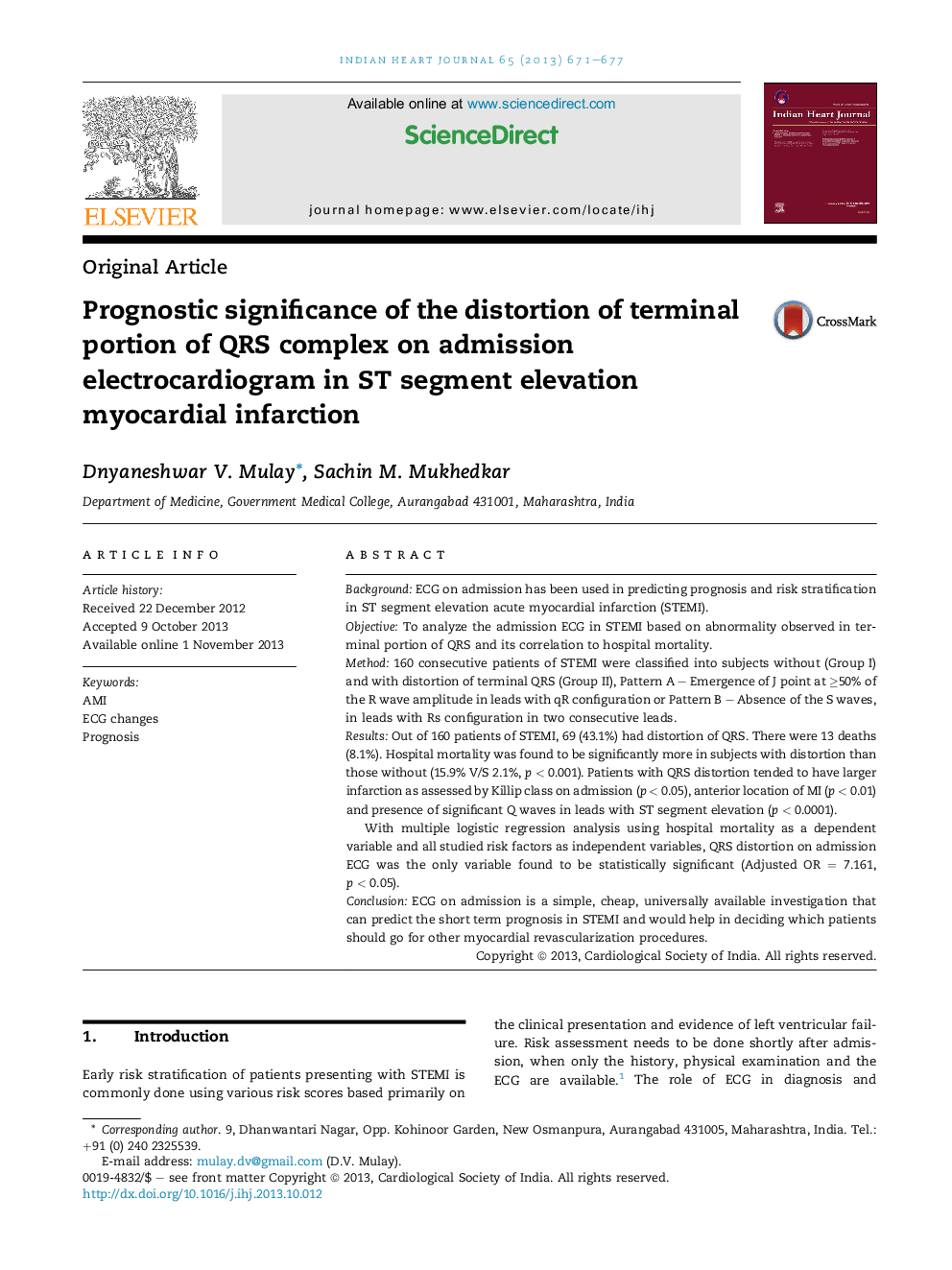| کد مقاله | کد نشریه | سال انتشار | مقاله انگلیسی | نسخه تمام متن |
|---|---|---|---|---|
| 2927799 | 1176182 | 2013 | 7 صفحه PDF | دانلود رایگان |

BackgroundECG on admission has been used in predicting prognosis and risk stratification in ST segment elevation acute myocardial infarction (STEMI).ObjectiveTo analyze the admission ECG in STEMI based on abnormality observed in terminal portion of QRS and its correlation to hospital mortality.Method160 consecutive patients of STEMI were classified into subjects without (Group I) and with distortion of terminal QRS (Group II), Pattern A – Emergence of J point at ≥50% of the R wave amplitude in leads with qR configuration or Pattern B – Absence of the S waves, in leads with Rs configuration in two consecutive leads.ResultsOut of 160 patients of STEMI, 69 (43.1%) had distortion of QRS. There were 13 deaths (8.1%). Hospital mortality was found to be significantly more in subjects with distortion than those without (15.9% V/S 2.1%, p < 0.001). Patients with QRS distortion tended to have larger infarction as assessed by Killip class on admission (p < 0.05), anterior location of MI (p < 0.01) and presence of significant Q waves in leads with ST segment elevation (p < 0.0001).With multiple logistic regression analysis using hospital mortality as a dependent variable and all studied risk factors as independent variables, QRS distortion on admission ECG was the only variable found to be statistically significant (Adjusted OR = 7.161, p < 0.05).ConclusionECG on admission is a simple, cheap, universally available investigation that can predict the short term prognosis in STEMI and would help in deciding which patients should go for other myocardial revascularization procedures.
Journal: Indian Heart Journal - Volume 65, Issue 6, December 2013, Pages 671–677